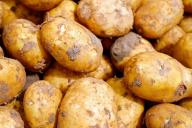Cutlery can become darker due to a natural process called tarnishing.
Tarnishing occurs when the metal in the cutlery, typically silver or silver-plated materials, reacts with certain elements in the environment.
Here's how the tarnishing process works.
Oxidation
When cutlery is exposed to air, it undergoes a chemical reaction known as oxidation.
Oxygen in the air reacts with the metal's surface, forming a thin layer of metal oxide.

This oxide layer appears as a dull, dark coating on the surface of the cutlery.
Sulfur Compounds
Sulfur-containing compounds, such as hydrogen sulfide, sulfur dioxide, or sulfur compounds in certain foods (like eggs and onions), can also interact with the metal.
This reaction forms silver sulfide or other metal sulfides, which are dark compounds responsible for the tarnished appearance.
Moisture and Humidity
Exposure to moisture and high humidity levels can accelerate the tarnishing process.
When cutlery comes into contact with moisture or damp surfaces, the reaction with sulfur compounds intensifies.
Contact with Other Metals
If cutlery comes into contact with other metals, especially those with different electrochemical properties, galvanic corrosion can occur, leading to darker spots on the surface.
Cleaning and Storage
Harsh cleaning methods or using certain cleaning agents that contain sulfur compounds can also contribute to tarnishing.
Improper storage without proper protection, such as leaving cutlery exposed to air or in humid environments, can worsen tarnishing over time.









